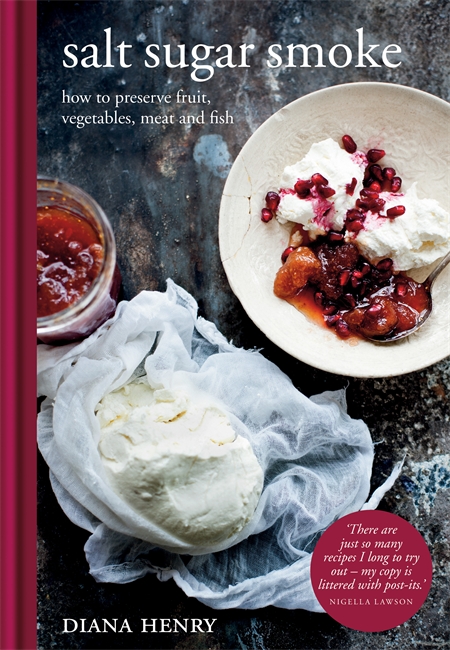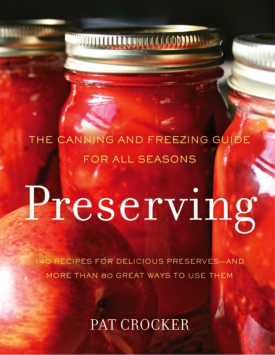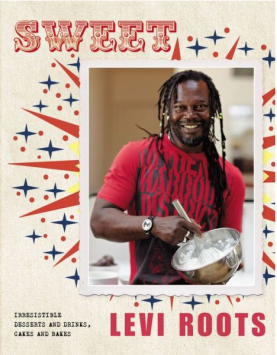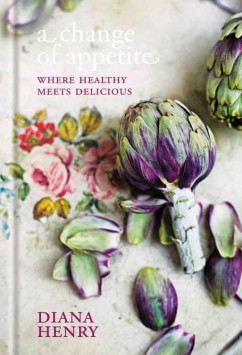Salt Sugar SmokeHow to preserve fruit, vegetables, meat and fish
This treasure trove of classic recipes is the only book on conserving you will ever need. Written by award-winning cookery writer Diana Henry, it is a complete guide to making your own jams, jellies, chutneys, pickles, relishes, cures, smokes, and foods preserved in oil.
This comprehensive book takes a fresh look at preserving. Jams and jellies, chutneys and pickles, smoked and potted meats and cured fish, cordials and alcohols, vegetables in oil, mustards and vinegars – here are recipes to fill the larder with the most delicious conserves of all kinds.
Award-winning food writer Diana Henry has sourced preserves from many different cuisines, from familiar fruit jams to more unusual recipes such as Georgian plum sauce, rhubarb schnapps and Middle Eastern pickled turnips. There is expert advice and instruction on techniques where necessary – from successful smoking (without expensive equipment) to foolproof jellies. As always Diana’s irresistible narrative style makes you feel she is in the kitchen with you, guiding you gently through the recipes and providing fascinating background that ranges from the traditions of wild mushroom picking in Italy, Scandinavia and Russia to Simone de Beauvoir (who compared making jam to capturing time).
Preserving makes the most of seasonal ingredients and intensifies flavours wonderfully. It’s also a delicious way of making everyday food special and giving friends and family something beautifully home-made. From elderflower in spring and summer tomatoes, to autumn berries and winter vodkas, the recipes in this book will provide you with season after season of wonderful preserves.
Diana Henry is one of our best-loved food writers. She has a weekly column in The Sunday Telegraph and also writes for Red, Saga, House and Garden and delicious. magazines, as well as being a regular broadcaster on BBC Radio 4. Diana has won numerous awards for her journalism and books, including Cookery Journalist of the Year from the Guild of Food Writers (three times, most recently in 2015) and Cookery Writer of the Year at the Fortnum & Mason Food Awards in 2013 and 2015. A Change of Appetite was voted Cookbook of the Year by the Guild of Food Writers in 2015. Diana has written nine books including Crazy Water Pickled Lemons, A Bird in the Hand, Cook Simple, Salt Sugar Smoke, Roast Figs Sugar Snow and A Change of Appetite. She lives in London with her partner and children.
Sweet Fig Vinegar
It is rare to find yourself with cheap figs, but occasionally I can pick them up right at the end of the day from a street market or in a Middle Eastern or Turkish grocery store. They make a sweet vinegar that has something of a marsala or a tawny port about it. You can replace some of the cider vinegar with balsamic vinegar to get a wonderful rich result, but you need to cut down the amount of sugar if you do that.
Fills 1 (¾ quart) bottle
8–10 ripe fresh figs
¼ cup chopped dried figs
1¾ cups cider vinegar
about 2¾ cups granulated sugar
1 Quarter the fresh figs and put them into a large jar with the dried fruit. Pour the vinegar over the figs. Crush the fruit using a vegetable masher, then cover and let sit in a cool, dark place for about a week. Mash the fruit a little a couple more times. The vinegar will turn a fantastic color.
2 Suspend a jelly bag over a bowl and pour the fruit and vinegar into it. Let drip overnight. The next day, measure the liquid and for every 1¼ cups of vinegar add heaping 1 cup of sugar. Put both into a saucepan and bring to a boil, stirring to help the sugar dissolve. Once at a boil, cook for five minutes. Let cool, then pour into a sterilized bottle (see page 11) and seal with a vinegar-proof lid. It keeps for up to six months.
how to use:
This makes a wonderful vinaigrette to serve with a salad of roasted or smoked duck breast, particularly if it contains a fruity component. A dash is also good in a fig ice cream, especially if you make your vinegar with some balsamic.











Leave a Reply